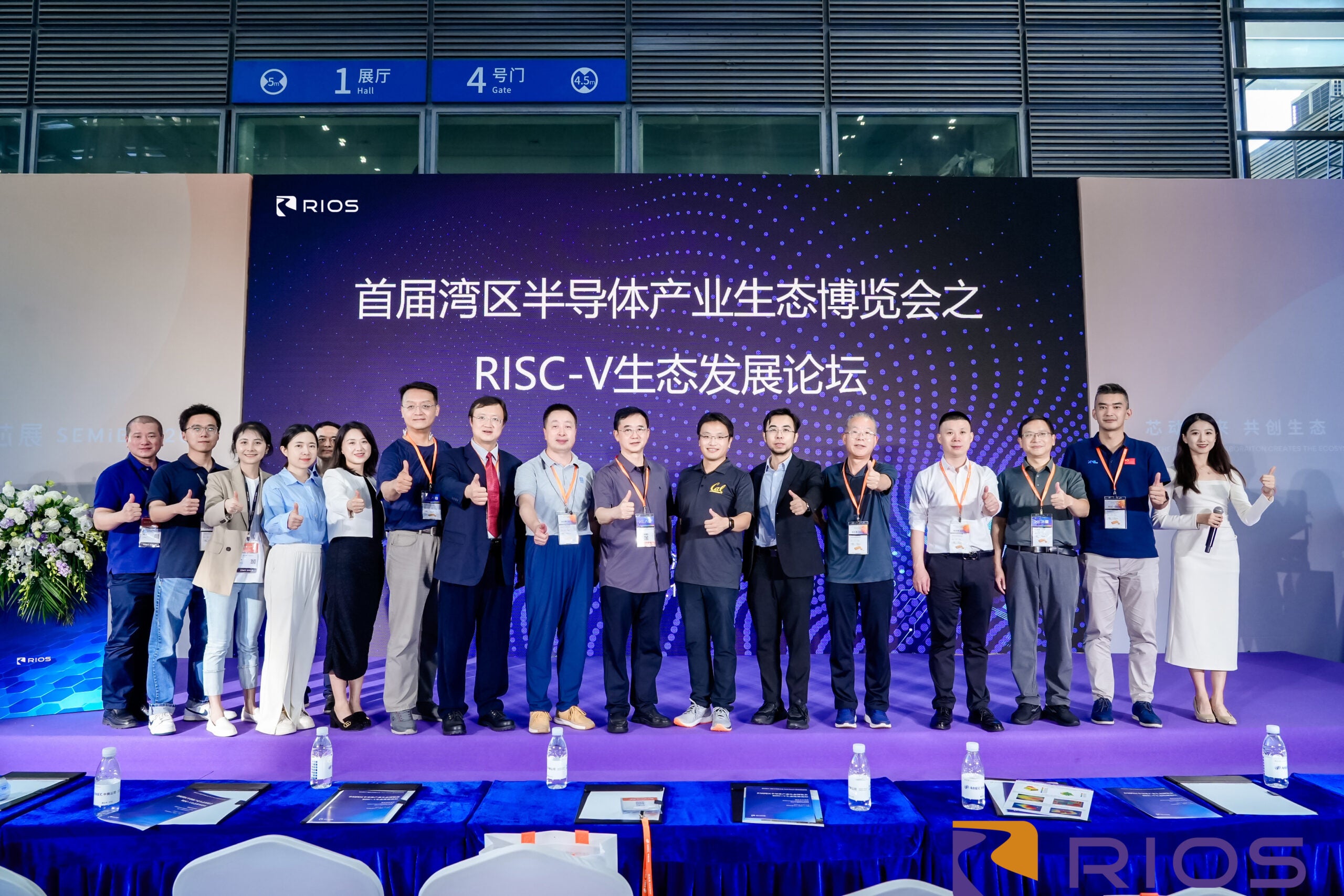
On October 17, the inaugural RISC-V Eco-system Development Forum, held as part of the Guangdong-Hong Kong-Macao Greater Bay Area Semiconductor Industry Expo, took place at the Shenzhen Convention and Exhibition Center (Futian).
The event brought together global open-source organizations, industry leaders, and academic institutions, including ey participants such as RISC-V International, Linux Foundation, Tencent, Alibaba, Amazon AWS, BYD, and representatives from Tsinghua University and Sun Yat-sen University.
The forum highlighted Shenzhen’s growing role in the global semiconductor industry, with the supporting efforts from RISC-V International Open Source Laboratory (RIOS) to advance open-source hardware, cloud computing, IoT, and AI.
With over 1.08 million attendees, both in-person and online, the event fostered discussions on RISC-V’s role in advancing open-source collaboration and its potential to shape the future of global technology.

Key Insights on Global Growth and Open-Source Innovation
Calista Redmond, CEO of RISC-V International, emphasized RISC-V’s potential for expanding open-source collaboration, particularly noting China’s involvement.
 Dr. Zhangxi Tan, Co-Director of RIOS, noted Shenzhen’s growing influence as a global hub for RISC-V development. He emphasized the importance of the region’s innovation network in accelerating the adoption of open-source technologies.
Dr. Zhangxi Tan, Co-Director of RIOS, noted Shenzhen’s growing influence as a global hub for RISC-V development. He emphasized the importance of the region’s innovation network in accelerating the adoption of open-source technologies.

Zhangxi Tan –“The Development and Prospects of RISC-V in the Greater Bay Area”
Dr. Liu Ming, Chairman of the Shenzhen Advanced Open Computing Committee, discussed RISC-V’s potential in the AI era, highlighting its flexibility as a key driver for AI chip innovation.

Technological Breakthroughs and Market Applications
The forum also covered industrial applications, with Qingyuan Ren, Vice President of RiVAI Technologies, emphasizing RISC-V’s transformative potential in reshaping data center architectures. Speakers such as Qing Chang from Kniulink(KNL), discussed the role of interface IP in driving chip performance and system efficiency; Zhonghui Xie, Chief Market Strategy Officer at X-EPIC Corporation Limited, discussed key breakthroughs in the EDA field.
Further contributions came from Hongwen Zhao, Senior Director of Server Product Line at Lanxin Computing (Shenzhen) Technology Co., Ltd, who explored open-source hardware development, and Fang Yu, GM of Developer Talent Ecosystem at CSDN, who shared insights on fostering developer communities for RISC-V. Xuan Yang, Vice President of APAC at Linux Foundation, emphasized the importance of open standards in driving global collaboration, while Lei Ren, Research Scientist at RIOS, discussed industrial deployment
strategies for open-source platforms.
Yi Li, Assistant Director at RIOS, moderated a panel discussion on academia-industry collaboration. Research Scientist William Chen from RIOS Lab and other panelists shared brilliant insights focusing on the need to develop interdisciplinary talents to support future technological advancements.
Shenzhen’s Semiconductor Growth
The forum highlighted Shenzhen’s position in the semiconductor industry. With a market size of over ¥200 billion, Shenzhen has more than 412 design companies, 79 packaging and testing enterprises, and 110 equipment companies, accounting for 63% of China’s integrated circuit design scale. The city’s expanding ecosystem and policy support make it a significant contributor to both national and global semiconductor development.
Innovation and Collaboration at SEMiBay Expo
The SEMiBAY Expo, held alongside the forum, featured over 400 companies across 40,000 square meters and attracted 68,000 in-person visitors. The exhibition provided a platform for industry professionals to exchange insights and showcase new technologies, further emphasizing Shenzhen’s role in semiconductor innovation.

This forum provided a valuable platform for discussions among academia, industry, and the open-source community, helping further the development of the RISC-V ecosystem while demonstrating Shenzhen’s growing influence in the global semiconductor market.


